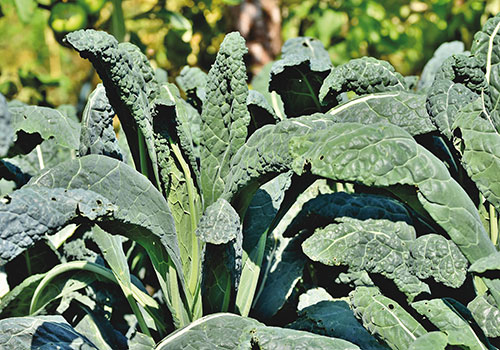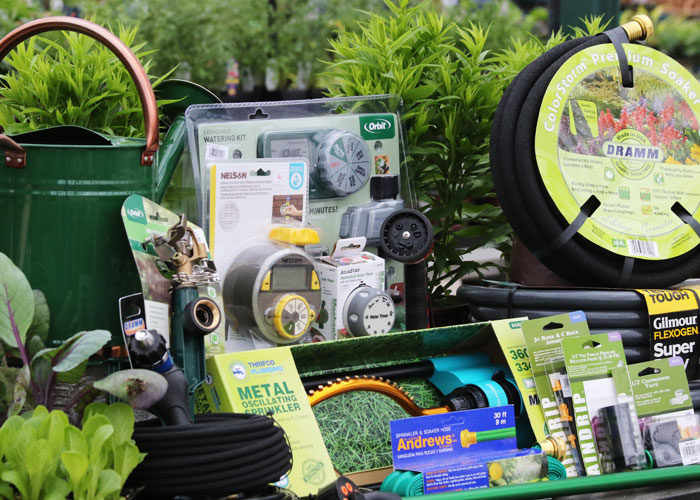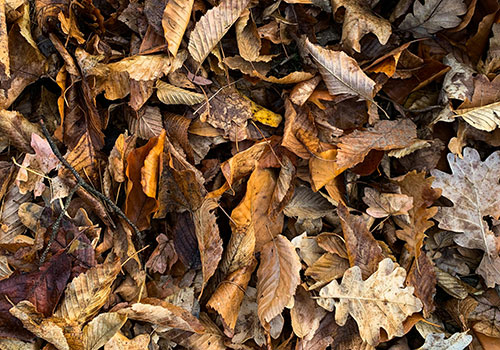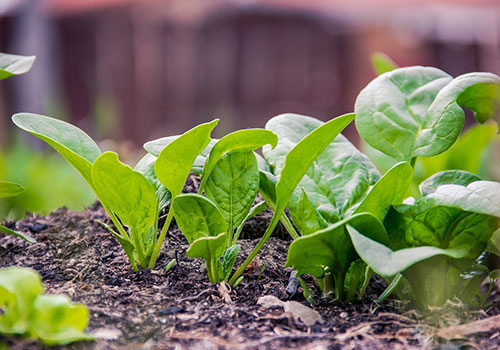Hot Weather, Cool Veggies
We’ve written before about the basics of summer planting for fall and winter harvest, as well as vegetables that can be planted as late as September for harvest through the winter and the following spring. For a quick overview of what to plant when, check out our seed planting chart.
But as our summers get hotter and drier, many year-round gardeners are wondering not just what to plant this time of year, but how to grow cool-season veggies through hot summer weather.
The biggest challenges for summer-planted veggies are drought and heat. The tomatoes and peppers we planted back in May might love this weather, but most cool-season veggies will bolt (go to seed) or simply not grow well when they get too hot and dry.
Help your summer-planted veggies thrive with these keys to success.

Water Deeply, Not Often
Many well-meaning gardeners water too often but not deeply enough. Roots of most vegetables extend at least 6-12 inches, and it takes longer than most people think for water to soak in that deeply. But once it does, vegetables may not need to be watered again for up to several days, even in hot weather.
The best way to find out what your soil needs is to use your senses. Stick your finger into the dirt as far as it will go. If your finger-tip is dry, so are the roots of your plants. You can also use a trowel or shovel to take a look at what’s going on below the surface of your soil.

Soaker Hoses for Easy, Efficient Watering
So you know you need to water more deeply, but you also know that relying on sprinklers can result in high water bills and increased risk of fungal disease. And you’re definitely not about to stand there holding a hose for hours at a time.
Enter soaker hoses. They’re not complicated at all, and using them is a lot easier than spending your mornings watering by hand. Just set up a soaker system once, making sure it winds within a few inches of each of your plants or rows, and then turn it on as needed.
With that said, occasionally watering from the top, using a sprinkler or hose attachment, may be a good idea. It can help keep dust off of your leaves, deter certain pests and diseases, and help your plants cool down on hot days.
Sky offers several options of easy-to-use soaker and drip systems, and we can help you decide which methods are right for you.

Mulch & Compost for Water Retention
We can’t say enough good things about mulch. Mulch is just anything you put on top of your soil. We recommend mulching with compost between your plants or rows. A layer of dry leaves, burlap, straw, or other biodegradable material can also help.
Mulch can help your veggies through the heat in at least three ways. It insulates the soil from sudden changes in temperature, keeping it cooler. It also slows down evaporation. Finally, compost acts like a sponge, soaking up water and then releasing it slowly over time.
If you have sandy or clay-rich soil, adding compost each year will also gradually improve the soil and help it maintain a more steady supply of water when your plants need it most.

Made in the Shade
Finally, make sure to shade your cool-season veggies from the afternoon sun. There are many ways to do this. You could plant cool-season crops to the north and east of taller sun-loving veggies, integrate them as ground-cover beneath your trees and shrubs, or set up a shade cloth or another structure.
With the right balance of gentle morning sun, afternoon shade, and deep watering, even the most sensitive cool-season veggies can thrive through the summer and provide you with abundant harvests all fall and winter long.
